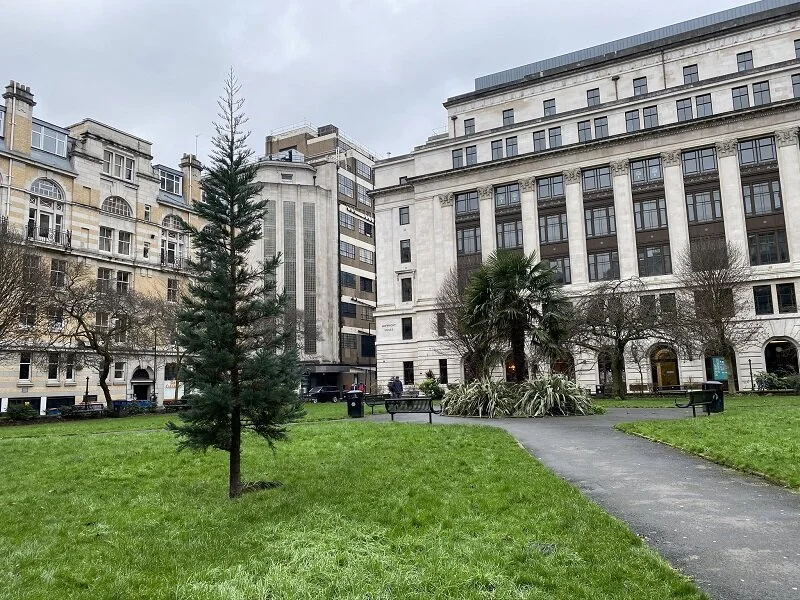Parsonage Gardens, looking towards the Kendal’s department store, January 2020
When I set up this website, I said that if I could persuade a handful of people to explore the world beyond their doorstep, I'd consider it a great success - and even if no-one reads, I'd still have had a great time documenting my own adventures.
Exploring though doesn't have to mean climbing onto a mountain ridge though - it is as much about the local park or the pathway through your town as it is about the high fells and far-flung shores.
With that in mind, and with some time to while away in central Manchester before a train, I thought I'd explore one of the quiet(er) hidden green spaces in the city centre. With Manchester city centre being surprisingly compact, it isn't actually flush with choices. To the south-east, there's Sackville Gardens, home to the Alan Turing memorial statue and the focal point for the Manchester Pride acts of remembrance. There's also what is charitably called a park around the Vimto sculpture on Granby Row - I adore the sculpture, but I’ve never been much taken by the surroundings. On the opposite side of the city centre, the lovely St John's Gardens sit between Deansgate and the Science and Industry Museum.
I was near Victoria though, so my choice was Parsonage Gardens, tucked away behind Kendal's. It has been hidden away as a quiet garden since the 1890s, when the Church and Parsonage House which had previously occupied the site were demolished. Manchester City Council have designated the gardens and surrounding streets as a conservation area. I'm no expert on architecture so I will defer to the Council's own write-up of the area's architectural merits.
Visit Manchester describe it as "a place to relax away from the hustle and bustle of Deansgate". On a weekday it soon fills up with city centre workers in search of some solitude on their lunch break, but on this chilly January Saturday afternoon there are only a handful of people wandering through and it paints a pleasant contrast with the buzzing shopping streets nearby. The gardens also have a place in the modern history of Manchester, something rarely mentioned but not to be forgotten.
I was nine years old on 3rd December 1992, but even living in nearby Salford, I have no recollection of the two IRA bombs which exploded in Manchester city centre that day. As (I hope) a relatively well-informed adult, I nonetheless remained almost entirely ignorant of the events of that day until some scattered coverage of the 25th anniversary remembrance events in 2017. Even then, my knowledge was (at best) sketchy until my visit on Saturday prompted some research for this piece. Surprisingly, the Council's own history of Parsonage Gardens makes no mention.
At around 8.40am on Thursday 3rd December, a small bomb hidden in bushes exploded on Parsonage Gardens. There was no warning, but a phone call was made shortly after the explosion, warning of further devices planted in the city centre. These proved to be red herrings, but shortly after 10am a second bomb went off on Cateaton Street, adjacent to what is now the site of the Harvey Nichols store. The second detonation injured many of those who had been evacuated away from non-existent devices elsewhere. In total, 65 people were injured, with one suffering life-changing back injuries. Manchester Cathedral was damaged and the bill for damage totalled around £10m.
Sometimes exploring opens up your eyes and ears in ways you didn't expect. Parsonage Gardens might be a lovely place to escape the buzz of the city centre, but it’s also a part of Manchester’s history that sometimes gets forgotten. If you visit, pause and take a moment to think about those whose lives were changed in December 1992.
Parsonage Gardens, looking north-west, January 2020
